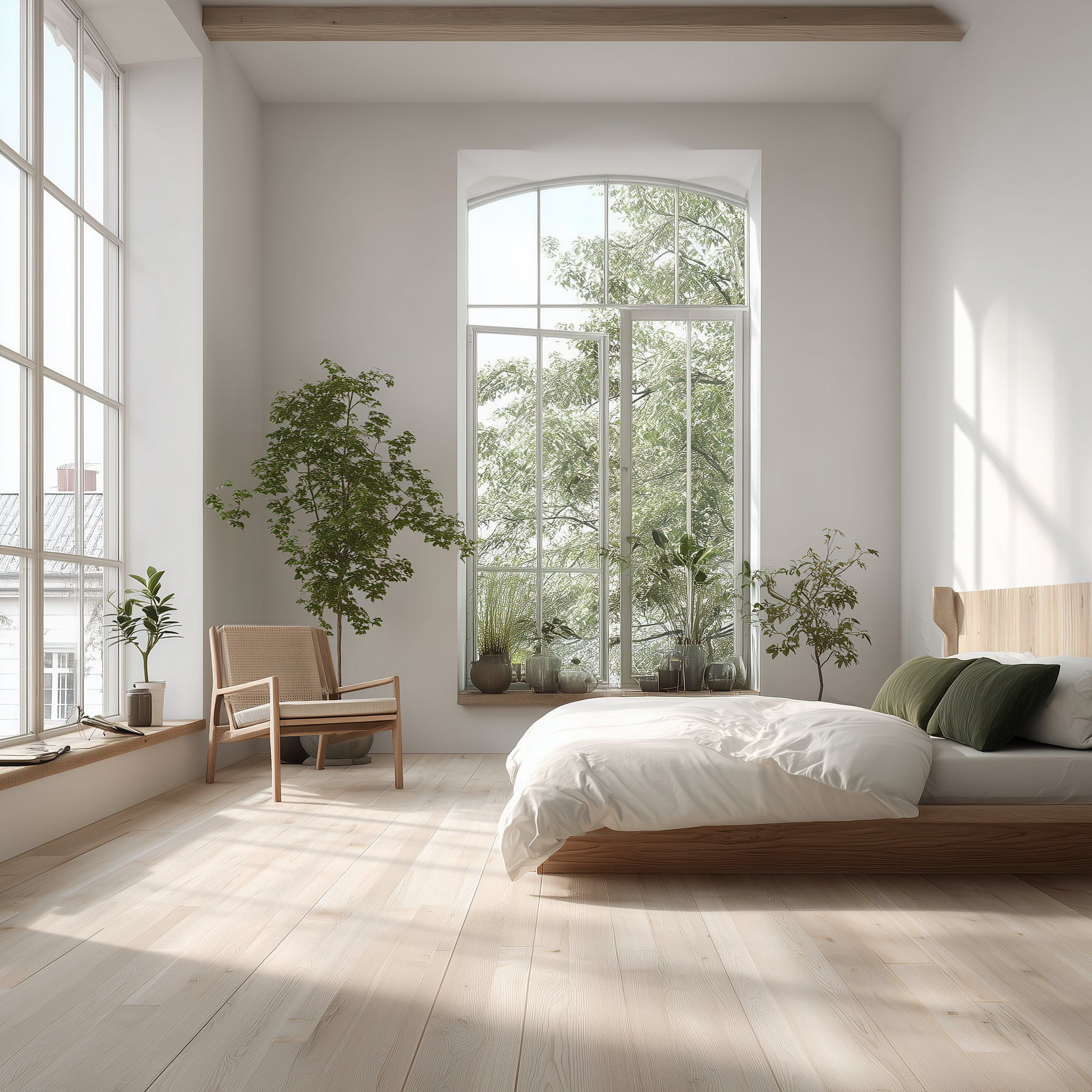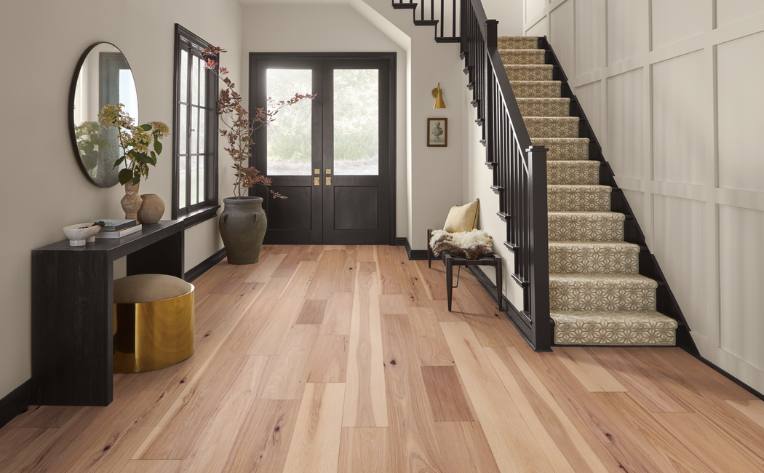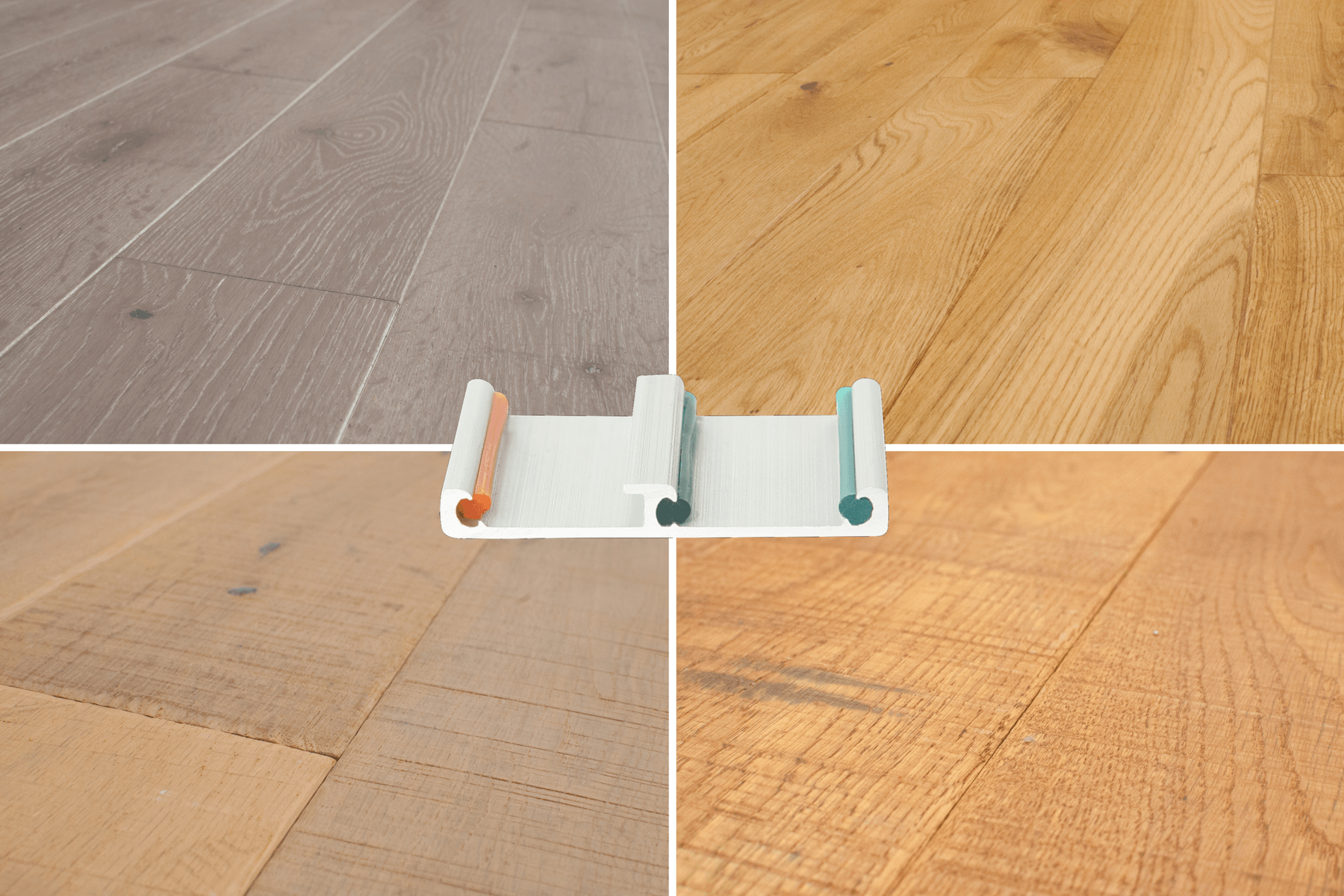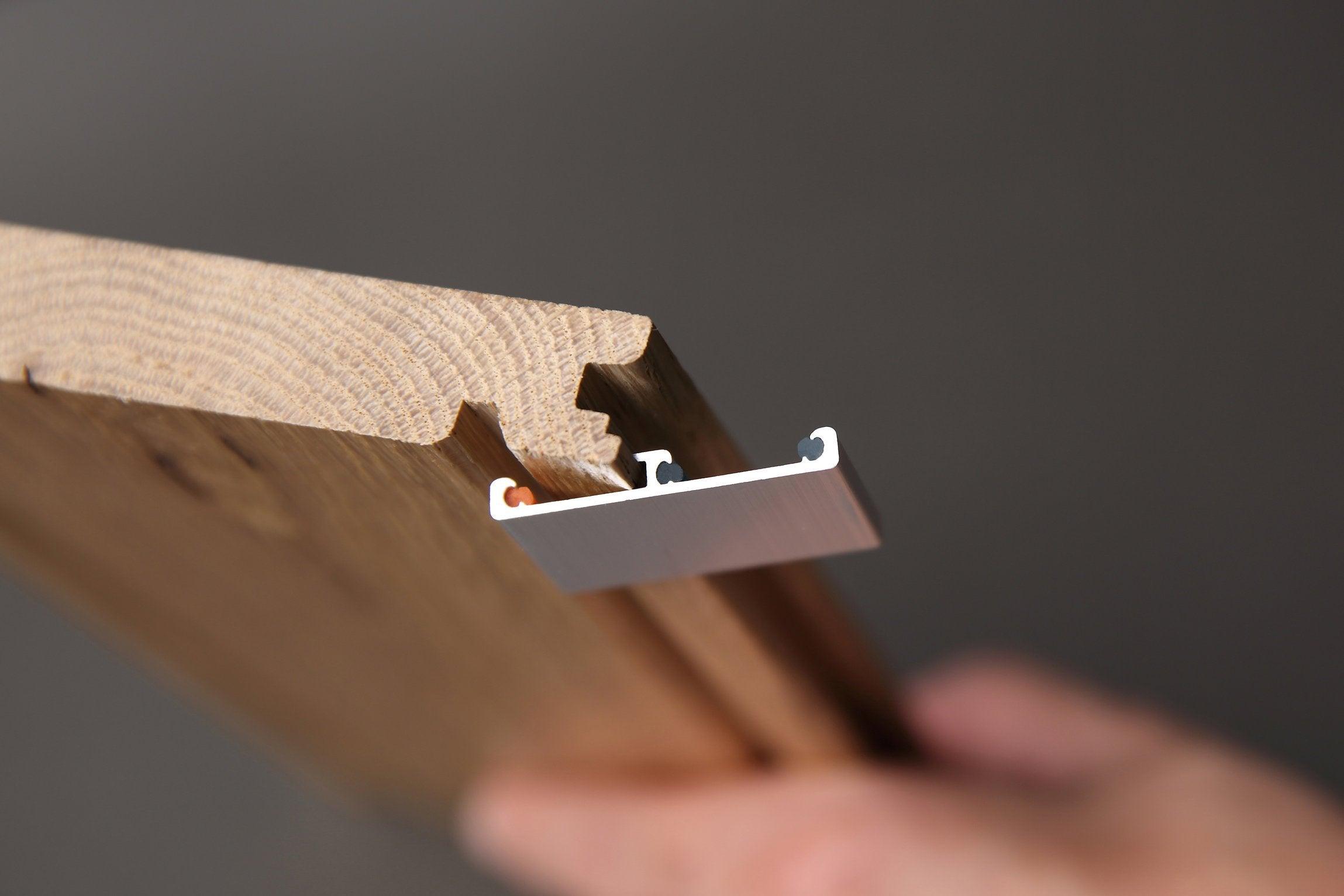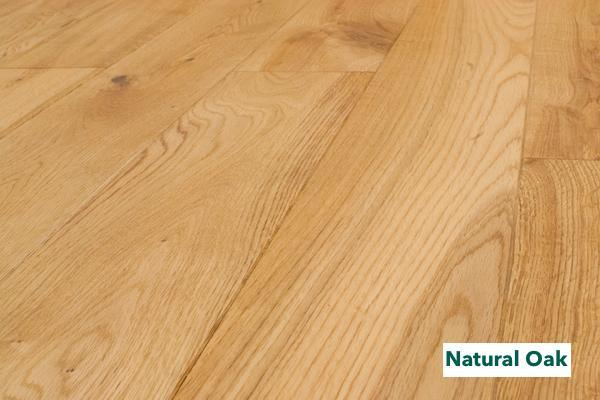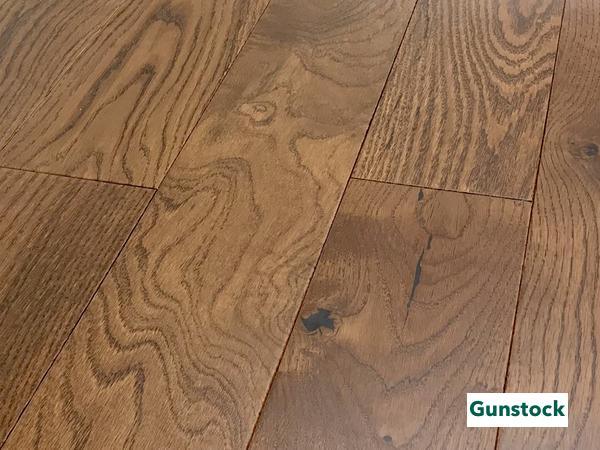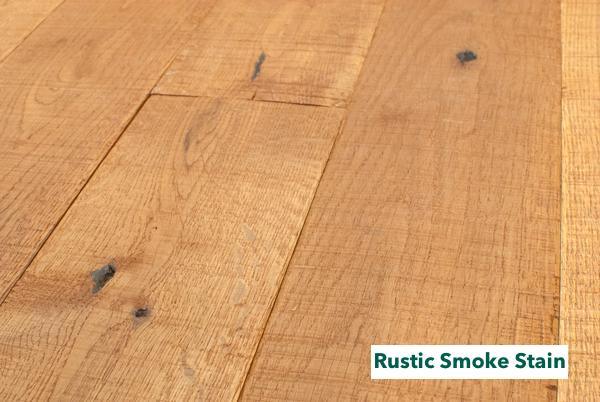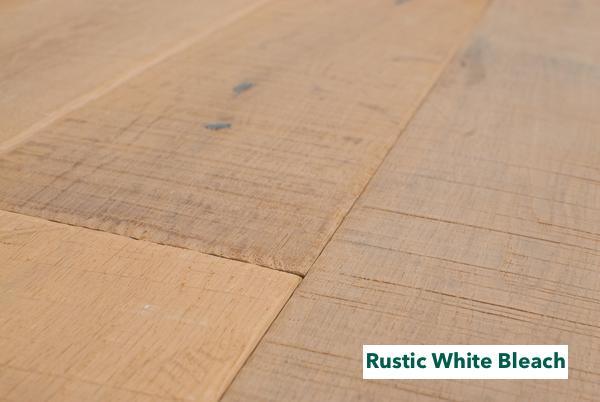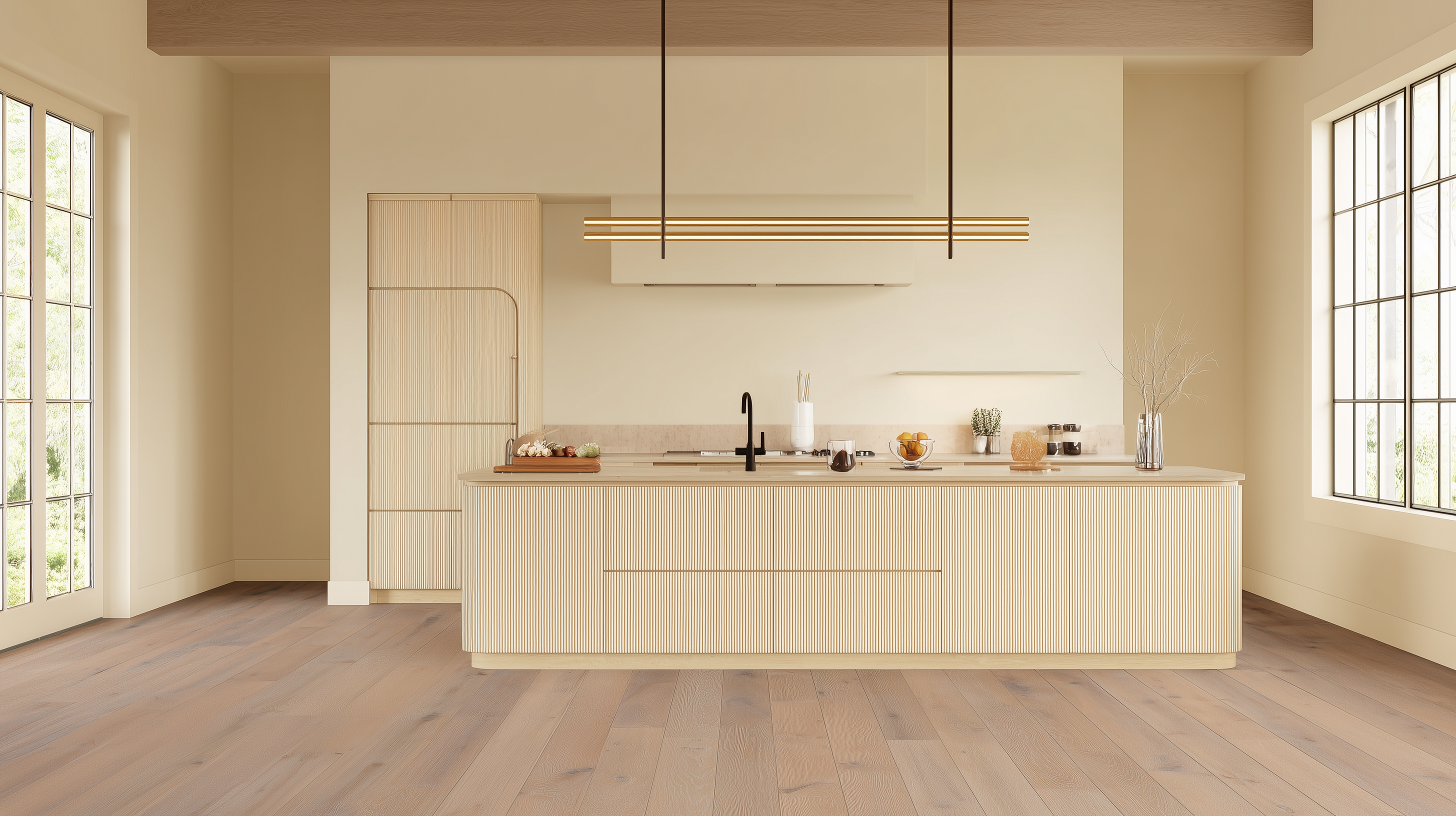Flooring has always evolved alongside technology. From traditional planks to laminates and engineered surfaces, each new option promises durability, affordability, or convenience. Wood Plastic Composite (WPC) is the latest contender—an engineered hybrid designed to mimic hardwood while offering water resistance and easy installation. It looks convincing, performs well in moisture-prone areas, and has quickly found its way into kitchens, basements, and rental properties. But how does it truly compare to hardwood, and is it the right fit for your home?
What is WPC Flooring?
Depending on whom you ask, the acronym stands for Wood Polymer Composite or Wood Plastic Composite, the latest engineered flooring to hit the market. What makes it unique is the core.
Most vinyl engineered flooring uses a wood core and a solid piece of PVC (polyvinyl chloride – the stuff they use to make water pipes) as the backing. WPC vinyl plank flooring uses a wood and plastic composite, making it more durable. It may or may not have an additional backing. The top may look like laminate flooring, but it uses a thicker vinyl.

One of the greatest advantages of a WPC floor is that it is waterproof core, and rot-resistant, making it an ideal choice for mudrooms, bathrooms, or below-grade applications. And because it’s mostly plastic, WPC molds into other shapes like bends and arches.
Unlike laminates, it doesn’t require an underlayment. It is a “lock together” system and doesn’t need glue or nails to install it. Here is a video showing all the parts of WPC floors.
WPC vs. LVT: Similar Acronyms, Different Cores
Another popular 3-letter flooring material is LVT. It means Luxury Vinyl Tile, and it’s another waterproof flooring option.
Unlike WPC’s wood and plastic core, LVT has a PVC core that is more flexible and less rigid. It’s not the best choice if you plan to set heavy furniture on top. It’s typically thinner, around 4mm, compared to WPC, which runs between 5mm to 8mm thick. LVT is an economical choice for flooring where appearance is not the first consideration.

WPC uses the latest in digital imaging to recreate life-like wood and stone patterns. It is a better choice for homeowners who want to showcase a kitchen or living room. WPC will be sturdier and wear better in the long run.
LVT is thinner, which can be a disadvantage if the subfloor has imperfections. They will show through. WPC uses a foam as part of its structure, which helps cushion it more than the LVT.
For either type of floor, use a 4mm underlayment for the best results and feel.
WPC vs. Laminate: The Moisture Test

Laminate flooring is an economical and durable flooring option. It consists of four layers,
A - The Wear Layer
B - Decorative Layer
C – The Inner Core
D – The Backing
You can watch the process of making a laminate floor from tree to finished product in this video.
Laminate floors have been a popular choice for many years. It is inexpensive and durable, especially in qualities using 12 mil thickness or more. Manufacturers have stepped up the imaging and texture quality to make the boards look like real wood.

Unlike WPC, the core of most laminates is wood, typically particle board. That can be a disadvantage in high moisture areas as the core soaks up moisture and can swell unnaturally. Because of the expansion and contraction, it requires molding at larger intervals to hide the expansion joints. If the joints are too tight or there is not enough expansion room, the boards may buckle or squeak when you step on them.
However, it’s usually not a problem to install laminate in most areas like bedrooms, family rooms, and living rooms.
Benefits of WPC Flooring
WPC is an excellent material for outdoor floors, such as around pools and decks. Its versatility extends indoors as well. Here are some excellent reasons to consider this type of floor:
- 100% Waterproof
- Termite-proof
- Resists mold and mildew
- Covers imperfections of the sub-floor up to ¼”
- Life-like look and feel of stone or wood
- Easier on your feet than ceramic tile
- Easy to maintain with vacuum and damp mop
WPC produced for residential flooring has a high-quality look of natural wood grain and is scratch resistant. It’s durable enough to meet commercial application codes, making it an excellent choice for rental properties.
Unlike laminates, it’s not necessary to put down an underlayment for WPC. It’s optional, solely for added cushioning and sound dampening. While most laminates require underlayment for their warranty, WPC floors do not.

Drawbacks of WPC Flooring
WPC flooring is still a human-made product. Although the surface looks remarkably like wood, they can only create a limited number of patterns per style. In a larger area, the repeated patterns on the boards become noticeable.
This floor is not an eco-friendly choice because of the adhesives, vinyl, and other plastics used in its construction. Wood is the most sustainable type of floor material.
And, WPC will not increase the value of your home the way that a natural hardwood floor will. No matter how close they try and make it look, there is no substitute for the look and feel of genuine hardwood under your feet.

Thickness and Wear Layers
When considering buying WPC luxury vinyl flooring, the thicker the vinyl layer, the higher the quality. WPC boards come in thickness options of 4mm to 8mm. However, the wear layer is more important for longevity than the thickness of the board. The wear layer is a transparent plastic coat that protects the printed vinyl wood grain layer underneath. Wear layers are typically 8 mil, 12 mil, and 20 mil. 8 mil is generally good enough for most homes, while 20 mil is best for commercial use.
As a rule of thumb, choose a thicker vinyl and wear vinyl layer for higher traffic areas. For example, if you are remodeling a low traffic bedroom, a thinner vinyl plank flooring will suffice.
Cost Considerations
As for cost, WPC averages about twice that of LVT, somewhere around $1.75 and $4.00 per square foot. If you compare it to hardwood, WPC runs about 30-40% less on average. You need to balance your short-term budget with the long-term value that hardwood adds to the property.
While the installation costs for WPC are lower than for hardwood, there is one solid hardwood floor option that provides ease to installation for contractors and DIYers alike. We’ll talk about that in a moment.
WPC Floor Manufacturers
Most of today’s WPC flooring comes from China. As a general contractor or DIYer, you’ll purchase from a wholesaler. Below are some sources you can try.
- Seven Trust – They are a wood-plastic composite manufacturer, supplier, and wholesaler
- Georgia Carpet Industries – A Georgia-based flooring wholesaler
- PROTEX – A PVC flooring manufacturer in Jiangsu, China
- Fusion Hybrid Floors – A producer of residential and commercial flooring
- Beau Floor – A vinyl flooring manufacturer and distributor in Georgia, USA
- ArchiExpo – A one-stop comparison website for flooring and other remodeling projects
Search for “WPC flooring” online, and you’ll find plenty of suppliers who can ship to your location.

Why Real Hardwood Still Wins
All the diverse types of floors mentioned above are simply alternatives to real wood floors, the gold standard of flooring. Although they use the latest digital printing and texturizing technology to look like an actual wood floor, it’s still artificial. Why not buy a real hardwood floor? Nothing looks or feels like the real deal.
Easiklip.com manufactures a solid hardwood floor that’s perfect for DIYers. The boards clip together using no screws, glue, or nails. You can even remove it and take it with you to a new location. With proper care, these solid wood floors will last for generations. You benefit from the added value, without the added expense and hassle of installing a typical hardwood floor.
Before deciding on a floor for your project, compare our affordable hardwood options here.
The Lasting Difference
WPC has its place. It is waterproof, durable, and ideal for spaces where moisture is the enemy of wood. It may suit rental properties, basements, or outdoor-adjacent rooms. But for living rooms, kitchens, and spaces where design is central, real hardwood remains the standard. Hardwood is not just a surface; it is a material that ages with you, adding beauty and value over time.
Bring Natural Elegance Home
Skip the imitation and choose real hardwood that is designed to be simple, beautiful, and long-lasting. Easiklip’s solid oak floors clip together without screws, glue, or nails, making installation effortless while preserving the authenticity of natural wood.
Order your free sample today: https://easiklip.ca/pages/order-samples
Explore pricing here: https://easiklip.ca/pages/pricing
Experience the permanence of hardwood, crafted to last for generations.
